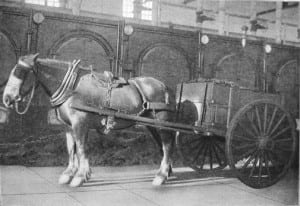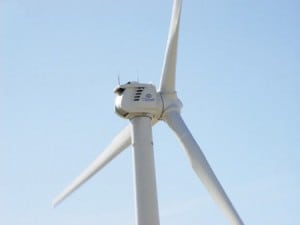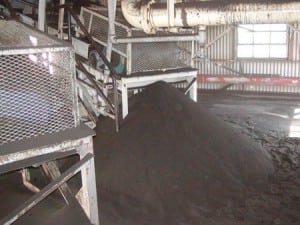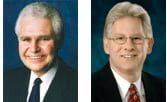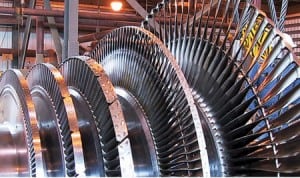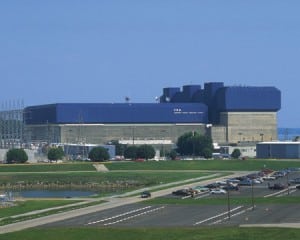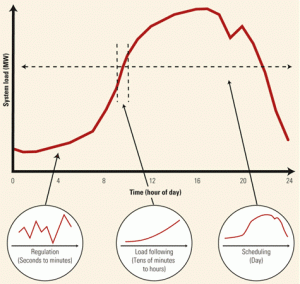-
Coal
The Coal Pile
The February 1907 issue of POWER magazine reported on the construction of a new coal-fired steam engine plant on the Merrimac River outside of Lawrence, Mass. According to the plant’s owner, "the simplest and most flexible means for handling coal… to the furnace is by animal muscle… that brings the coal to the firing floor […]
-
Wind
Wind power: Disruptive or not?
Harvard Business School Professor Clayton Christensen coined the term "disruptive technology" in his best-selling 1997 book, The Innovator’s Dilemma. According to Christensen, a disruptive technology unseats a dominant technology by creating products that are so much cheaper or better in one or more ways that they quickly become the new mainstream standard, transforming an entire […]
-
Gas
Global Monitor (Nov/Dec 2006)
Renewables require rethinking just about everything/Torque-splitting drive train improves wind turbine reliability/Waste gas–burning engines reach milestone/Hybrid power plant targets pipeline losses/Power from paint/Gulf Coast Power Association conference report/Pat Wood talks about the challenges facing ERCOT
-
Commentary
A new vision for energy efficiency
The U.S. electric utility industry has long encouraged its customers to get more value from their electricity dollar. Today, the industry—facing volatile costs and mounting concerns about the environment—is coming together to create a new role for energy efficiency—one that enables technology to deliver more value to customers and electric utilities alike. For example, "smart" […]
-
Readers talk back and Correction (Nov/Dec 2006)
Fireproofing switchyards From an insurance carrier’s perspective, we fully condone the use of on-line condition monitoring for large, critical transformers ("Monitoring key gases in insulating oil keeps transformers healthy," POWER, October 2006). However, another issue that the transformer failure and subsequent fire at Arizona Public Service’s West Wing Substation in 2004 highlights is the need […]
-
-
Legal & Regulatory
Renewable power: Environmental or political product?
What’s in a name? Plenty, if the word is "renewable." Intuitively, most people outside the energy industry consider hydroelectric power "renewable." The dictionary defines the word as follows: "capable of being replaced by natural ecological cycles." Accordingly, rainwater should indisputably qualify as renewable. Yet since the early days of renewable portfolio objectives, most hydro […]
-
Instrumentation & Controls
The long and short of last-stage blades
The use of longer steam turbine last-stage blades (LSBs) reduces the number of low-pressure casings and, thus, a turbine’s total installed cost. In many cases longer blades extract more energy from low-pressure steam before it enters the condenser and improve a turbine’s overall thermodynamic efficiency. But creating longer blades requires forsaking conventional design techniques for complex aerodynamic analysis of stationary vanes and rotating blades. Has the market push for longer LSBs exceeded current technology limits? Does the industry conduct proper analysis to determine when using longer blades is beneficial or not?
-
Nuclear
DOE project converts weapons-grade uranium to fuel for Browns Ferry
An offshoot of the 1993 Megatons to Megawatts nonproliferation program, the Blended Low-Enriched Uranium (BLEU) project has modified and developed new fabrication processes for converting surplus weapons-grade uranium materials into nuclear fuel for TVA’s Browns Ferry Nuclear Plant. This innovative public/private venture continues to deplete nuclear arsenal stockpiles while reducing storage, security, and disposal costs to U.S. taxpayers.
-
Wind
Unique challenges face wind power developers, buyers
Utility resource planners are used to viewing new generation in terms of firm, dispatchable capacity. Dispatching a renewable resource such as wind requires a different perspective. Wind capacity can serve as a hedge against fossil fuel price risks and perhaps future emissions restrictions, but it requires a much more structured planning horizon. Integrating wind farms into their portfolios may be the most difficult challenge utilities face today.
Search


